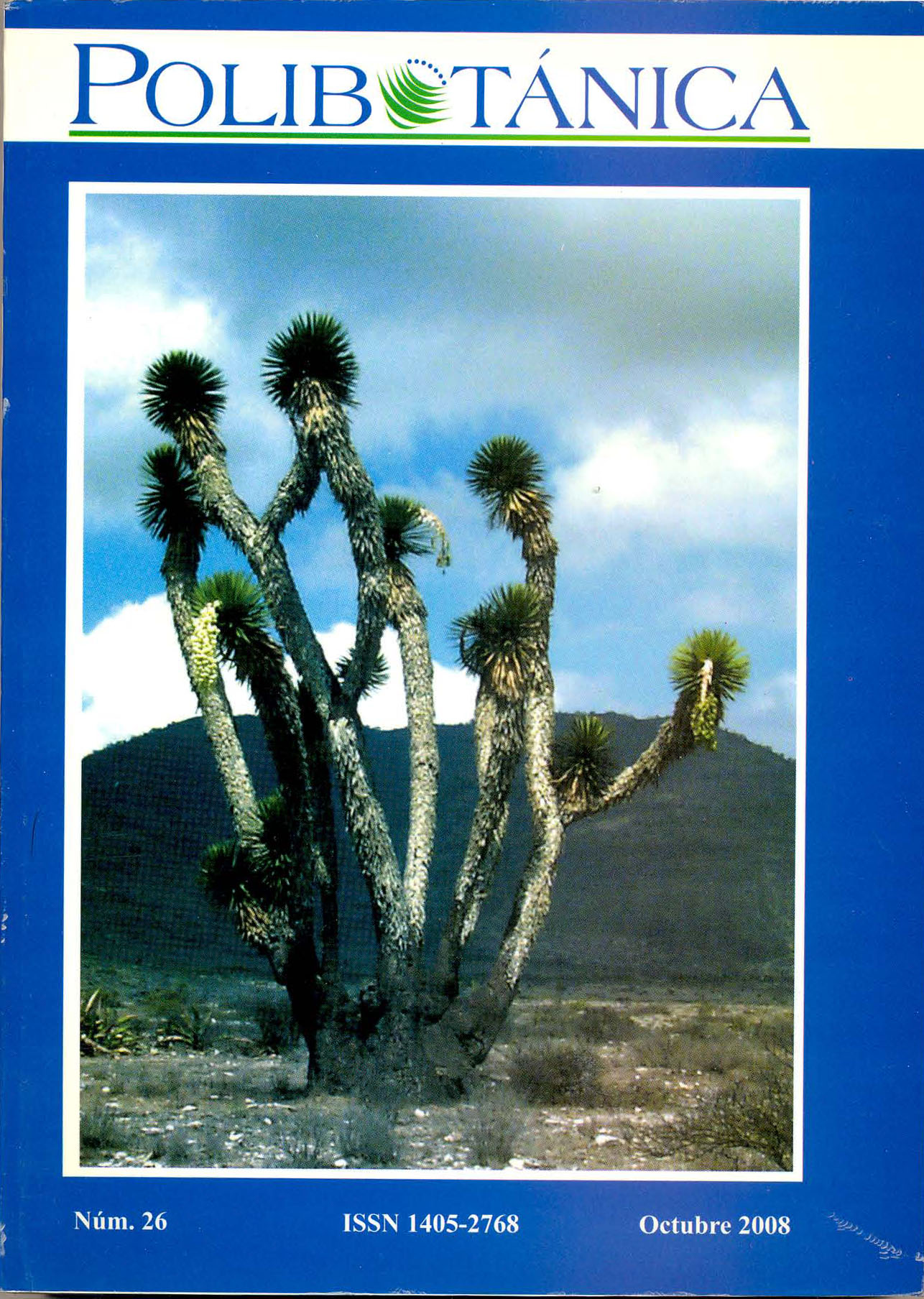EL PALMAR DE ORBIGNYA GUACUYULE AL SUR DE NAYARIT, MÉXICO
Abstract
The study area is a microbay of 145 ha located in the coastal zone of southern Nayarit,
Mexico, between the towns San Francisco
and Lo de Marcos, in Bahía Banderas Municipality. It supports palm vegetation (Orbignya guacuyule), which was characterized
for this study using floristic and ecological
sampling. We obtained a list of 171 species
grouped into 57 families, of which legumes
(Fabaceae) are dominant. The floristic richness potential is 40 spp./ha. The presence of
about 70% of the species can be considered
related to natural disturbance. Two associations are recognized: one with elements
of tropical subdeciduous forest (Bursera
ovatifolia, Brosimum alicastrum and Ficus
spp.) and the other with elements of tropical
deciduous forest (Carica mexicana, Lysiloma acapulcensis and Tabebuia rosea). The
data indicate that this palm vegetation is
maintained in part by a disturbance dynamic,
which is linked mainly to the strong winds
that hit the Nayaritan coasts.
Downloads
Published
Issue
Section
License

Polibotánica by Departamento de Botánica de la Escuela Nacional de Ciencias Biológicas del Instituto Politécnico Nacional se distribuye bajo una Licencia Creative Commons Atribución-NoComercial-CompartirIgual 4.0 Internacional.




















